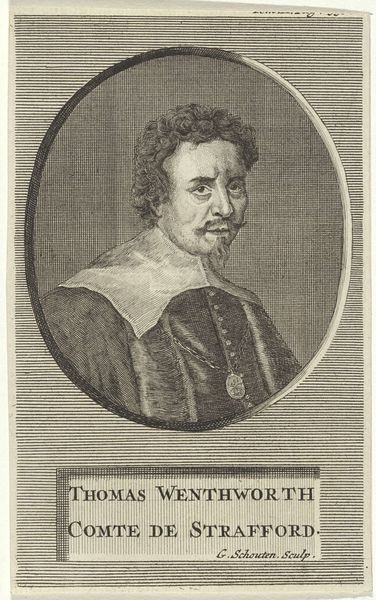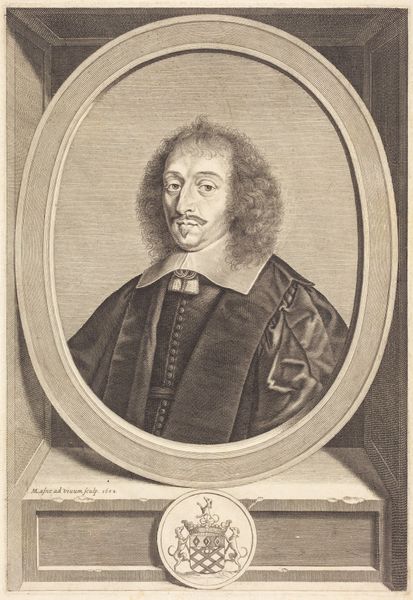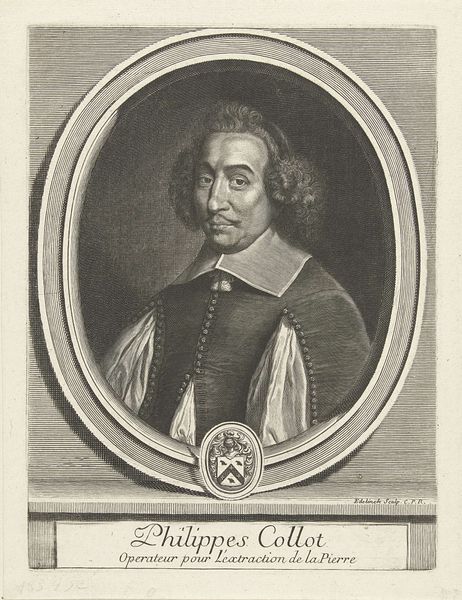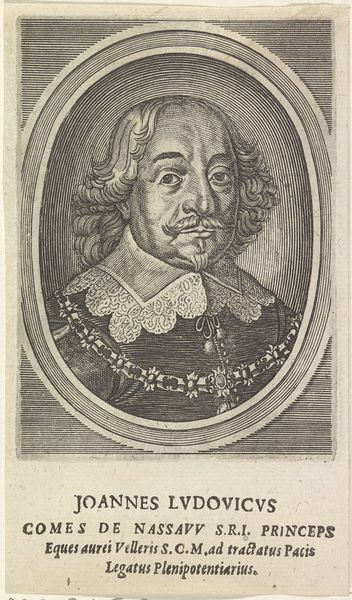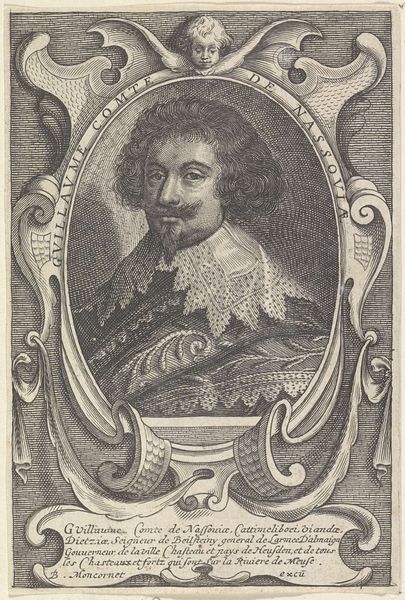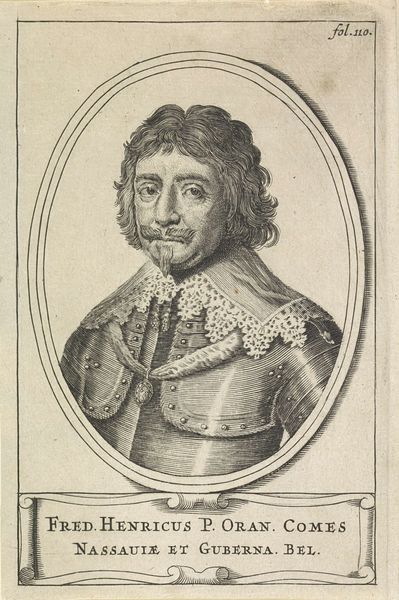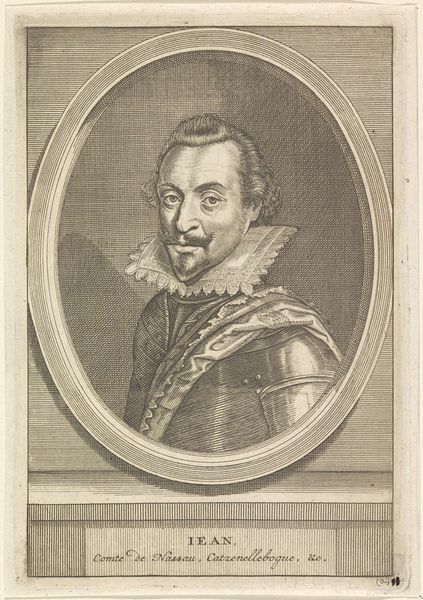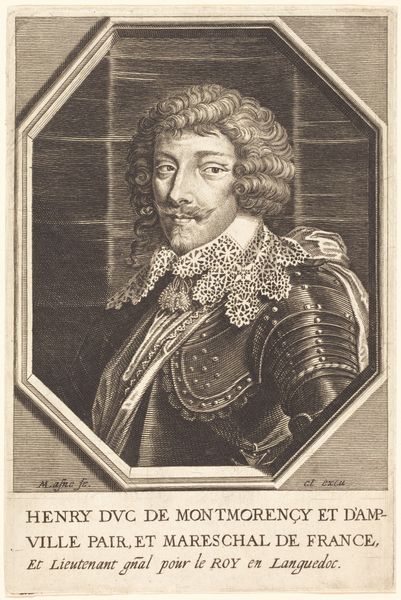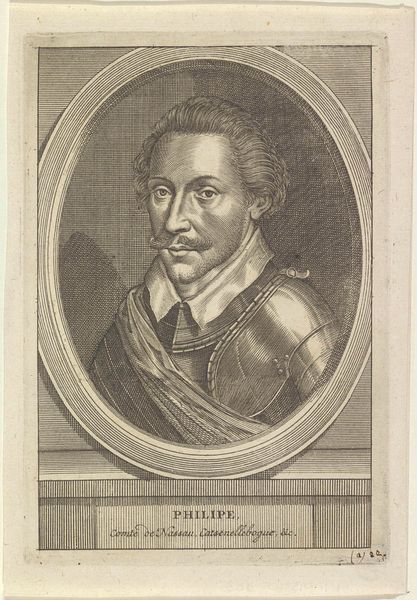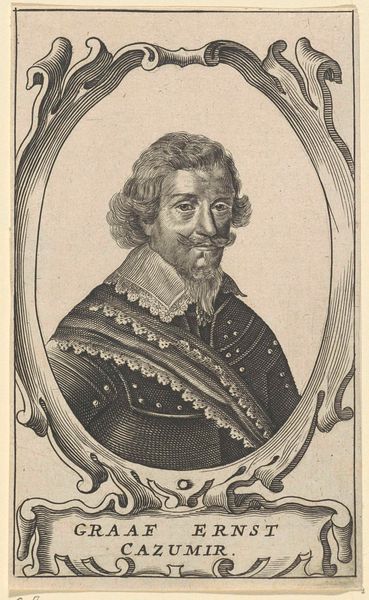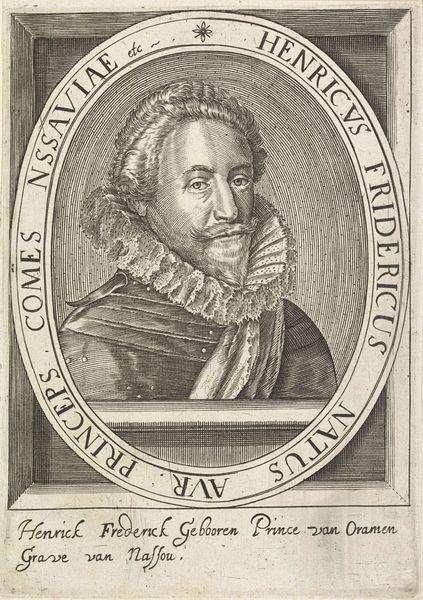
engraving
#
portrait
#
baroque
#
old engraving style
#
caricature
#
portrait reference
#
line
#
engraving
Dimensions: height 142 mm, width 83 mm
Copyright: Rijks Museum: Open Domain
Curator: Here we have "Portret van de grootofficier van Luynes," or "Portrait of the Grand Officer of Luynes," an engraving attributed to Jan Lamsvelt. It was likely created sometime between 1684 and 1743 and is currently held at the Rijksmuseum. Editor: My initial impression is one of slight unease. The lines are incredibly precise, almost clinical, yet the overall effect is somewhat grotesque, especially around the eyes and the overly theatrical pose. Curator: Indeed, the starkness of the lines, a defining characteristic of engraving, contributes significantly to the composition. Consider how the artist uses hatching and cross-hatching to define form and shadow, creating a very distinct tonal range. Note also how this line style flattens the image as the background contrasts with the rounded oval containing the portrait. Editor: I can’t help but view this image through the lens of power and representation. The Grand Officer, emblazoned with his title below, is carefully constructed to convey authority, yet something feels performative and perhaps even a bit desperate. We must ask whose story is being told, and for what purpose? It almost verges into caricature. Curator: A fitting observation. The very nature of portraiture in this era was deeply intertwined with status and the construction of identity. The baroque style, in which this image appears, typically seeks a visually rich presentation, yet there’s restraint at play here. The material—the engraving itself—tempers overt displays of wealth and instead favors precision of line. The lines surrounding the portrait create an unsettling effect, reminding me of bars in a cage. Editor: Yes, and I think we must consider the legacy of figures like the Grand Officer of Luynes. How might his power have been accumulated? How might he be complicit in sustaining various oppressive systems? These portraits serve as reminders of those hierarchies. What’s the impact of seeing these people preserved forever in museums? Curator: That tension between individual artistry and the representation of power is always going to be the crux. This portrait showcases, to me, the artistry embedded in its structure and detailed linework to create a striking and lasting composition. Editor: And for me, it serves as an unsettling yet useful reminder that visual culture and representations are rarely neutral. By closely inspecting these portraits, we reveal and contextualize historical narratives about gender, class and power.
Comments
No comments
Be the first to comment and join the conversation on the ultimate creative platform.

